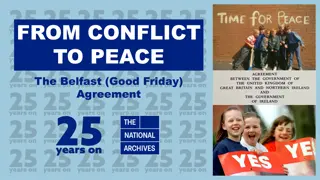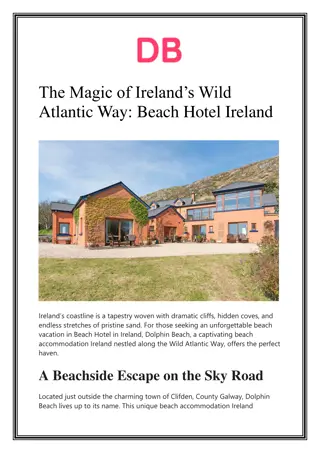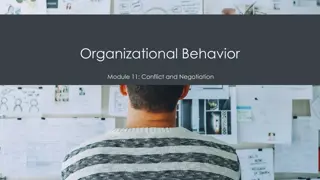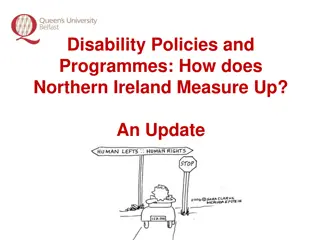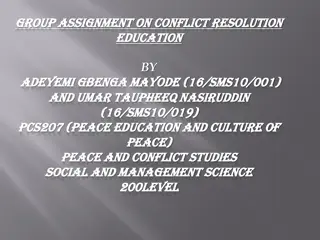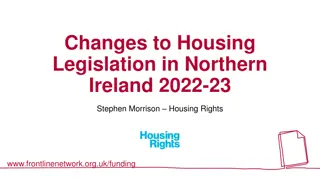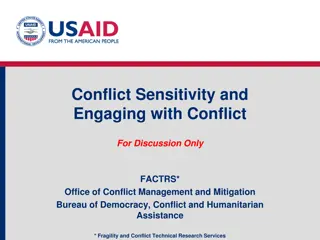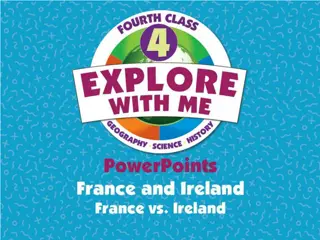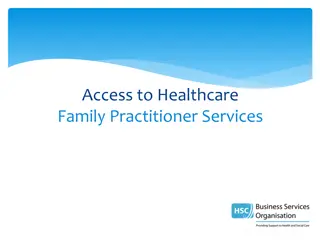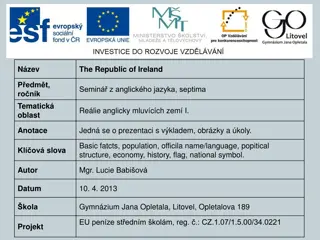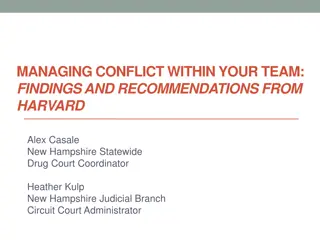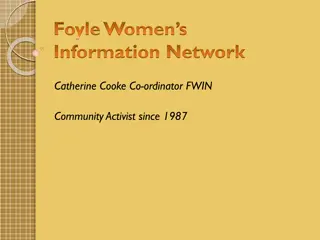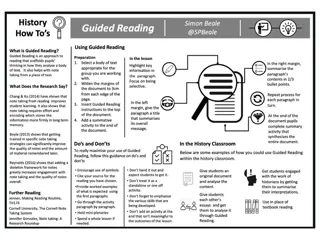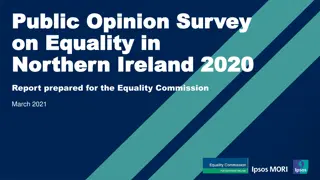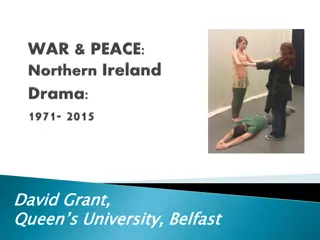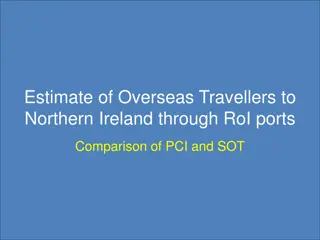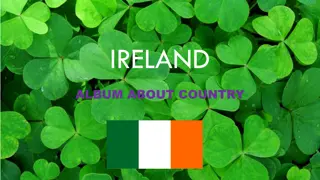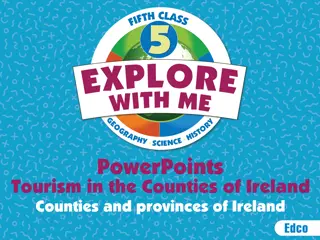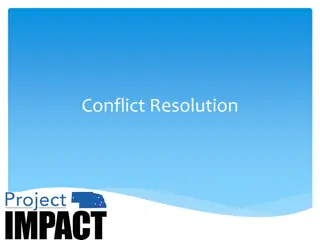The Conflict in Northern Ireland: A Historical Overview
Explore the complex history of the conflict in Northern Ireland, which is primarily between Protestants and Catholics, with roots in nationality, land rights, and historical events dating back centuries. Learn about the key beliefs, historical background, and significant dates that have shaped the ongoing tensions in the region.
Download Presentation

Please find below an Image/Link to download the presentation.
The content on the website is provided AS IS for your information and personal use only. It may not be sold, licensed, or shared on other websites without obtaining consent from the author. Download presentation by click this link. If you encounter any issues during the download, it is possible that the publisher has removed the file from their server.
E N D
Presentation Transcript
History of Conflict An introduction to the situation in Northern Ireland _____________________________________ Created by Keith O Connell Penn High School 2004
Background Data The conflict in Northern Ireland is between two groups; Protestants and Catholics. The conflict is not necessarily about religion, but it does have some significance in the history of the conflict. The current population of Northern Ireland is 1.5 million. 55% of the population is Protestant, 45% Catholic. Today, the two groups place their emphasis on different elements of the problem.
Protestant Beliefs Have a constitutional right to the land Preserving the Union with Britain Resisting the perceived threat of a United Ireland A red and white flag with a hand in the middle.
Catholic Beliefs For some, Northern Ireland remains a National struggle Self determination Others viewed the conflict as a struggle against unfair practices by the Unionist government between 1920-1970 A wooden cross with a celtic design.
Historical Background The proximity of Britain and Ireland has lead to a long history of interaction and linkage.
Key Dates in Northern Ireland History 1170- Settlers from Britain arrive in Ireland 1608 -Plantation of Ulster began English and Scottish settlers moved into the north 1641- The Catholic-Gaelic rising in response to the Plantation and the confiscation of land by Protestant settlers from England and Scotland 1690- The Battle of the Boyne and the victory of Protestant William III over Catholic James II - this victory is still celebrated in many parades in Northern Ireland 1801- Act of Union which abolished the Irish Parliament and bound Ireland and Britain together as parts of the United Kingdom 1912 -Ulster Solemn League and Covenant signed by over 400,000 Protestants who wanted to remain in the Union 1916- The Easter Rising in Dublin against British rule
Creation of Irish Free State / Northern Ireland In 1921, the island of Ireland was partitioned by the British government. The 26 southern counties gaining independence from Britain, while the 6 northeastern countries remained part of the United Kingdom
Northern Ireland At the time, the 6 northeastern counties had a built-in Protestant majority (65/35) Ethnic bias in the distribution of housing and welfare services lead to more turmoil between the two sides
Beginnings of The Troubles ___________________________ Started in the 1960 s -Civil Rights Campaign Catholics-inspired by the worldwide civil rights movement Protestants saw this as a threat to Northern Ireland s existence responded hostile to demonstrations
The Troubles A map of ireland with different flags. 1969 London deployed the British Army to restore order. To most Catholics, they were seen as protector of the Northern Ireland state and repressive majority population. (others British troops on Irish soil)
Creation of Paramilitary Groups The creation of the Provisional Irish Republic Army (PIRA later shortened to IRA) was organized in response to British engagement into the civil rights movement. The IRA gained members during the 1970 s and became more violent in their tactics.
Creation of Paramilitary Groups Ulster Volunteer Force (UVF) -Loyalist Paramilitary Group. Formed primarily in response to IRA, also used violence to help its cause. A close-up of a flag.
Formation of the Peace Process As the two sides fought against each other for most of the 1970 s and early 1980 s, it became evident that progress was never going to be made using force. Instead, the IRA and UVF began aligning with political parties in Northern Ireland as a way to fight for their goals.
Sinn Fein- Republic Ireland Sinn Fein The political wing of Republicanism and the IRA. Leader-Gerry Adams A person in a suit and tie.
Progressive Unionist Party and Democratic Unionist Party Progressive Unionist- Was involved in discussions leading to negotiations between the parties. Democratic Unionist- Continues to remain loyal to Britain
Continuing towards Peace- Frameworks for the future Starting in the early 1990 s, steps were being taken by both sides to show their willingness to live in peace. The ceasefire of 1994 by the IRA was seen as a positive sign that would eventually bring both sides to diplomatic relations for the first time in several decades.
Good Friday Agreement April 1998 The agreement reached 5 main points: Future constitutional status was in the hands of its citizens If the people wanted to unite, they could by voting Current constitutional position remains within the UK Citizens could be Irish, British, and both Republic of Ireland would drop territorial claim 1. 2. 3. 4. 5.
Future of Northern Ireland? With continued peaceful agreements, the hopes of those in Northern Ireland is to move forward and begin a new chapter in what was been a struggle to co-exist for the past several decades and begin the healing process.
Works Cited Conflict Archive on the Internet (CAIN) http://cain.ulst.ac.uk/index.html Sinn Fein http://sinnfein.org/ Ulster Volunteer Force http://www.fas.org/irp/world/para/uvf.htm
Special Thanks! Special thanks to the West European Studies National Resource Center for the opportunity to research this topic in depth.
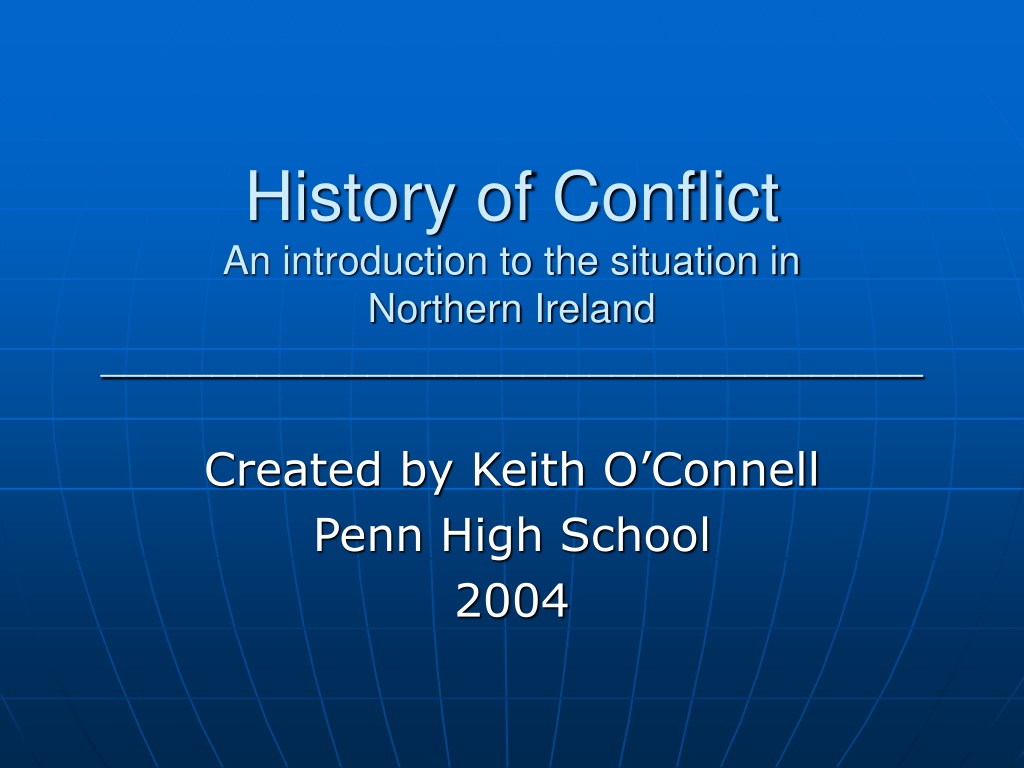
 undefined
undefined





